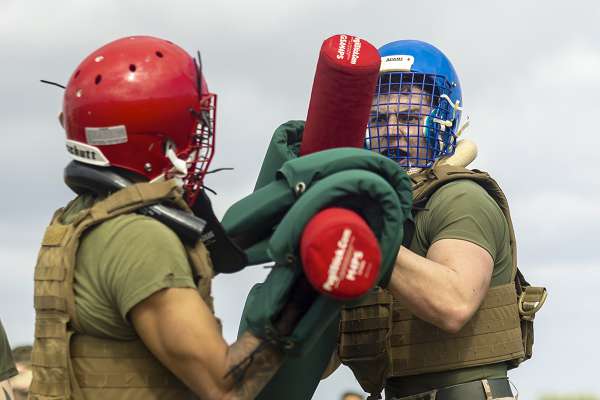
Futenma, Japan. (January 19, 2024): Whether it is a fight at school or in sports like boxing, you always remember your first taste of close quarter combat. In this photo by Lance Corporal Sav Ford, Marines participate in a pugil stick battle during a field competition. These pugil stick battles have become a rite of passage for Marines and Soldiers undergoing basic combat training.
The word is… the troops look forward to them.
The goal of the pugil stick is to simulate close combat in battlefield situations while maintaining a controlled, safe environment for safety. The weapon is designed like a rifle and bayonet, one end is usually designated as the butt end while another simulates the bayonet. This heavily padded pole-like training weapon has been used since the early 1940s by military personnel training for rifle and bayonet combat.
While many feel a bit apprehensive or fearful at first, these battles have become a tradition and a source of pride. Battling with pugil sticks tests both a recruit’s mind and body and even a less than perfect bout instills confidence.
The name "pugil stick" comes from the Latin pugnus (fist) which is also the term used for boxing (pugilist) and the word "pugnacious" (eager to fight). The bouts are full contact with recruits wearing protective gear such as football helmets, hockey gloves, and chest and shin guards. Much like traditional martial arts, the techniques involve deflecting the blow of an attacker and countering with a downward strike, simulating a "bayonet". Likewise, students are taught to use a straight jab, usually with the butt end.
Perhaps the most significant aspect of this training is the mental development that the troops undergo. Most civilians are unprepared for the life and death scenarios warfighters are likely to encounter in real combat. Pugil stick training motivates troops to develop the “warrior spirit,” toughness, and confidence they will need on the battlefield.


